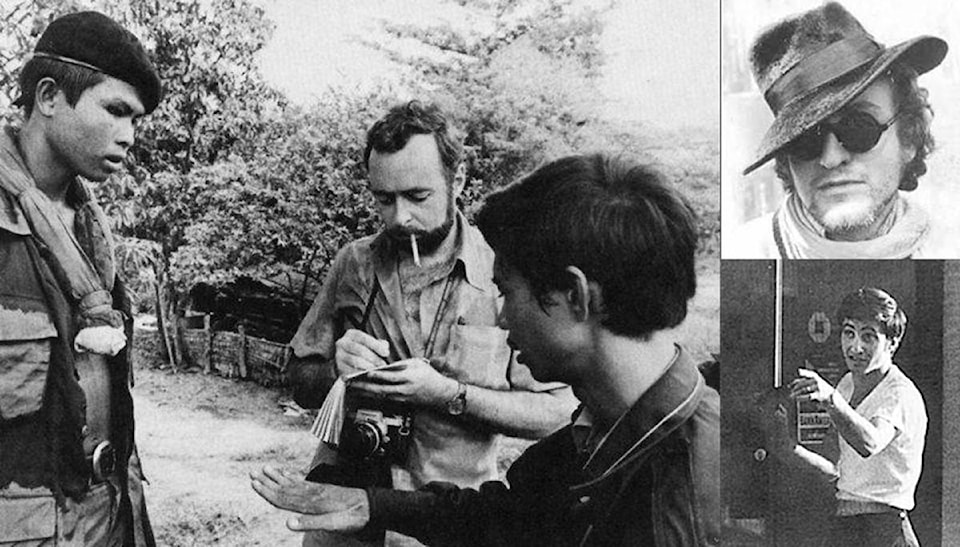Mike Selby
“So the new generation takes few risks. It goes through high school, obedient; graduates, looks for a job, saves and plans. Endures. And once a week, on Saturday night, its one great moment of release, it explodes.”
These words appear in ‘Tribal Rites of the New Saturday Night’ — a feature story appearing in the June issue of ‘New York Magazine,’ 1976. Written by British journalist Nik Cohn, the piece told the story new generation of young adults not in Manhattan (where everything was supposedly happening), but in Brooklyn. The ‘60s, Cohn felt, had somehow bypassed this group. None of them had even passing knowledge of hippies, Woodstock, mind-expanding drugs or even rebellion. They were somehow still stuck in the ‘50s, just with different music.
The article focuses on a young man named Vincent; a third generation Italian-American who sells paint at a hardware store and lives in a small apartment with his large extended family. He and his friends usually visit different nightclubs every Saturday night, but while Cohn was with them they only went to one: 2001 Odyssey. This club had a dance floor, and — as disco had just arrived — crowds flocked to it. Everyone drank, smoked, and tried to impress the opposite sex.
“Lisa was in love with Billy and Billy was in love with Lisa. John James was in love with Lorraine. Lorraine loved Gus. Gus loved Donna. And Donna loved Vincent. But Vincent loved only his mother, and the way it felt to dance.”
Cohn could have been writing about 18 to 20-year-olds anywhere.
That last part — the way Vincent loved “the way it felt to dance” — was the spine of Cohn’s entire piece. Not only did he love to dance, he was easily the best dancer Brooklyn had ever seen. Months earlier when disco first hit, Vincent tried a few moves he had seen someone do at a run-down club, and stunned everyone in the place. People were amazed when he danced; no one could ever come close to how good he was.
The above mentioned Donna represented one of dozens of woman who fell hard for him.
“Week after week she came to Odyssey just for him, to watch him dance, to wait. She sat in a booth by herself and didn’t drink, didn’t smile, didn’t tap her foot or nod her head to the music. Though Vincent never danced with her, she would not dance with anyone else.”
Books are usually adapted for movies, not magazine articles, but Cohn’s piece grabbed the attention Hollywood, who made it into the 1977 film ‘Saturday Night Fever.’ For all the jokes and parodies about it, the film remains one of the greatest dramas ever made.
And it is not alone as being a feature film based on a magazine article.
A ‘Life Magazine’ article about a botched bank robbery titled ‘The Boys in the Bank’ later became the 1975 film ‘Dog Day Afternoon.’
Ostensibly the attempted robbery was to help fund a Vietnam War veteran pay for his girlfriend’s sex reassignment surgery. The truth was it was a straightforward mafia operation by the Gambino family.
1984’s ‘The Killing Fields’ was based on a New York Times article called “The Death and Life of Dith Pran.’ A first-person piece written by Sydney H. Schanberg, the work brought the unfathomable horror of the Khmer Rouge to life by Schanberg’s description of a solitary friendship.
The tale of overindulged and wealthy teenagers who got their kicks by breaking into the homes of celebrities came to light in the Vanity Fair piece ‘The Suspects Wore Louboutins’ by Nancy Jo Sales. It too was filmed as ‘The Bling Ring’ in 2013.
That otherwise healthy male refugees from Laos were dying in their sleep all across the United States was featured in a series of “Los Angeles Times’ articles in the early ‘80s. Although much was made about a Laotian folk-tale sleep demon, a follow-up study had found the 104 “sleep deaths” resulted from a combination of genetic heart disorders, a history of seizures, and severe malnutrition from years spent in refugee camps. Director Wes Craven used this series of articles as the basis for his 1984 runaway hit ‘A Nightmare on Elm Street.’
Other films based on magazine or newspaper articles include “Argo,’ ‘Urban Cowboy,’ ‘Coyote Ugly’ and ‘American Gangster.’
As for Nik Cohn, much did not go his way after ‘Saturday Night Fever.’ In 1983 he was arrested for importing 4 million dollars’ worth heroin from India. Then in 1996, he admitted to fabricating most of ‘Tribal Rites of the New Saturday Night.’
He admitted to never getting a handle on Brooklyn’s nightlife, and based Vincent on a British mod he knew back in the 1960s.
Mike Selby is Information Services Librarian at the Cranbrook Public Library
Photo — At left: Sydney H. Schanberg,who wrote “The Death and Life of Dith Pran,’ which became ‘The Killing Fields.’ Top right: Nik Cohn, who wrote the magazine piece which became ‘Saturday Night Fever.’ Bottom right: John Wojtowicz, the bank robber whose actions were adapted into ‘Dog Day Afternoon.’ Internet photos
